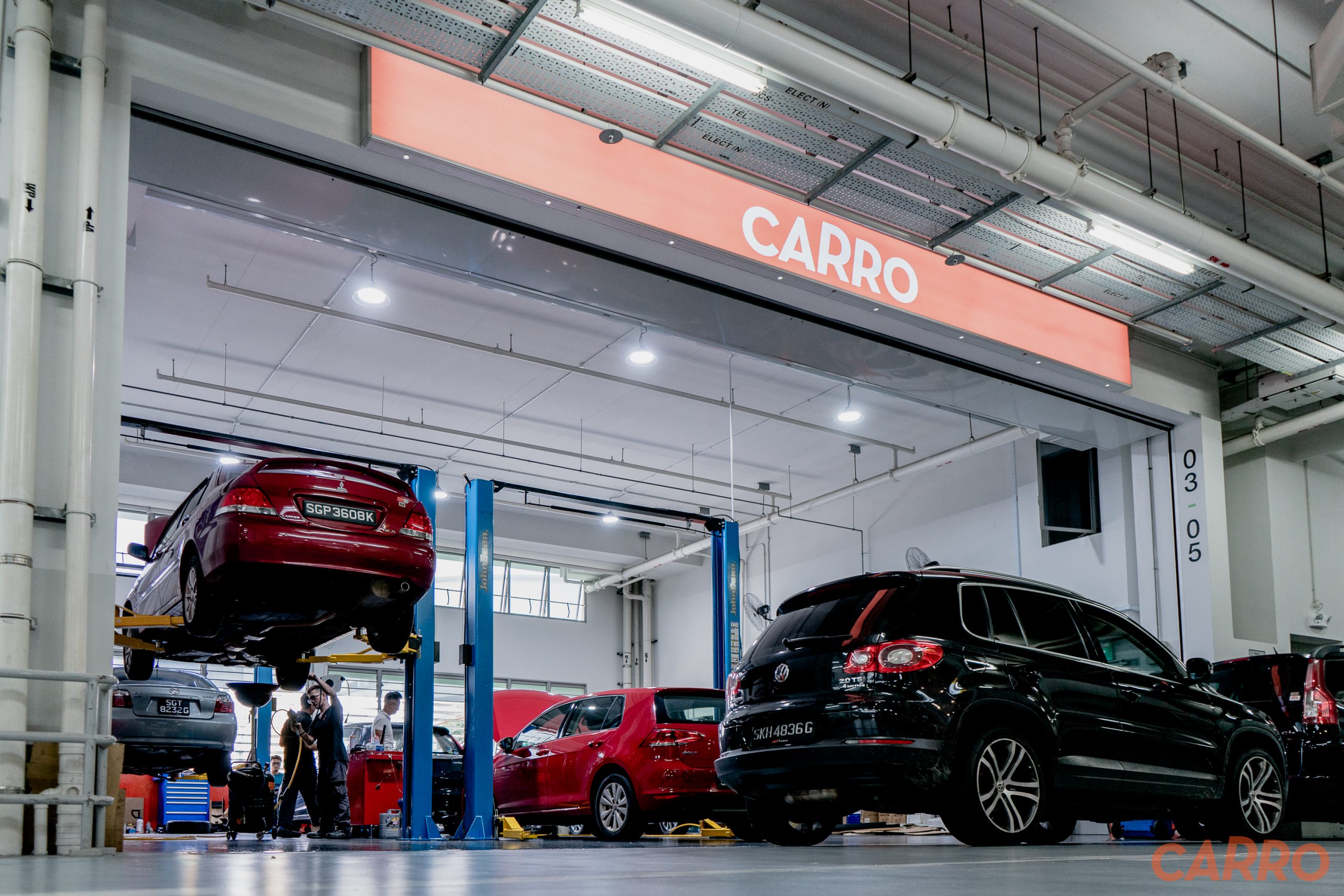How to salvage a terrible paint job?
If you have actually paid someone to paint your car and that person did a terrible job, you know what to do. If you have done it yourself to have some fun, or to save some money, sorry, but your best bet is to sand it off and start over again. Here is a quick rundown of how you should do things in order not to find yourself in a similar problem again.
1. Make sure your primer and paint are compatible
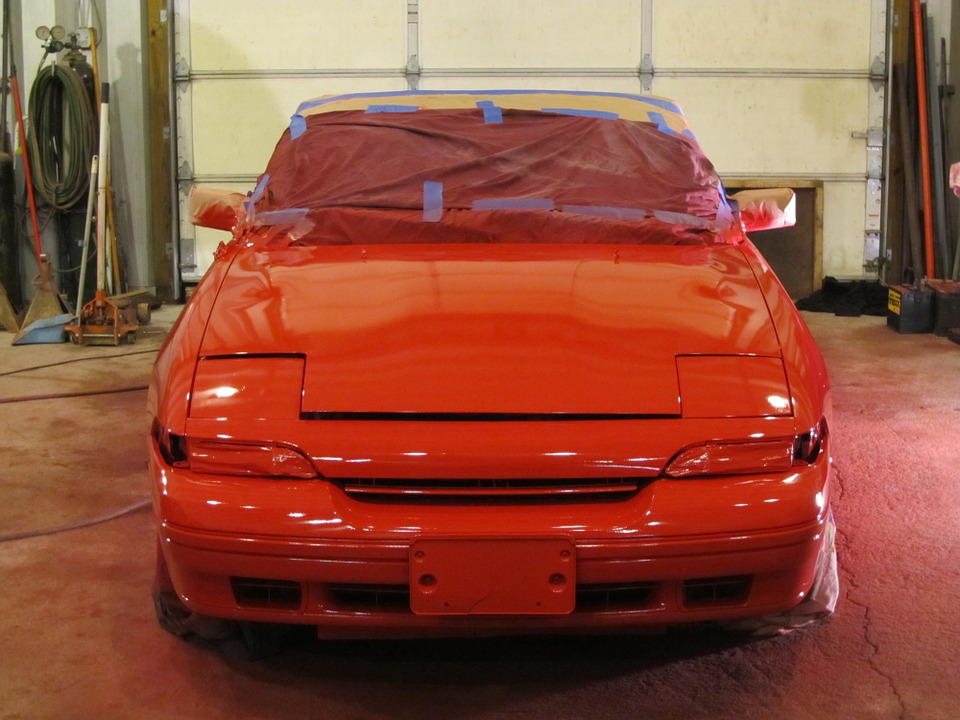
Primer gives a great base for painting, but it is not necessary to prime a whole car. Sanded paint is good enough for most applications. When it comes to primers, there are several different kinds which are best for different purposes. You should ask in the shop and give them as much information as you can and they are bound to give you all the answers you might need.
When it comes to compatibility of your primer and paint, most of them will work just fine with each other especially if they come from the same manufacturer. However, having in mind that their incompatibility will mean your time, work and money were spent in vain, it really doesn’t hurt to ask. Make sure you read the instructions you get with the products.
2. Work in a clean environment

Even though many would think that this point should have been at the very top, this is actually the best place for it. After applying the primer and sanding off any irregularities, many people feel they are ready for painting. Well, no. You should get your car out and clean the garage to make it as sterile as a paint booth – or as close as you can. Remember, dust is your biggest enemy. Make sure you wet the floor before you move the car back into the garage.
3. Mask the car
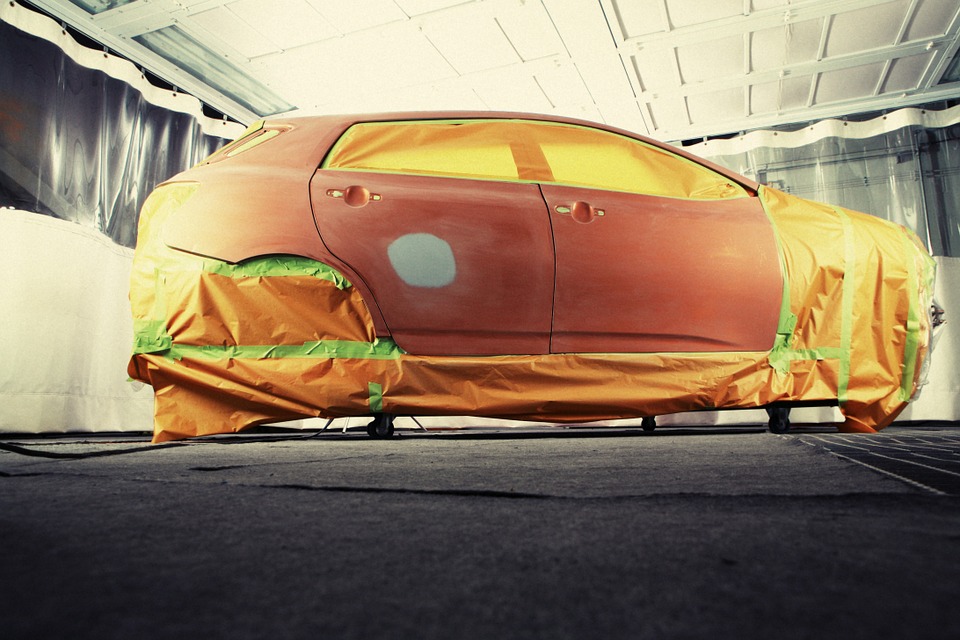
And as you are doing this, make sure you leave no places where dust could hide. Clean the car again after masking and do this with fresh cloths, since the old ones could have particles that will make your brain explode when you see them under your fresh paint. After masking and cleaning, make sure you tack the car even if it looks flawless. Remember, you can’t see everything.
4. Prepare the paint
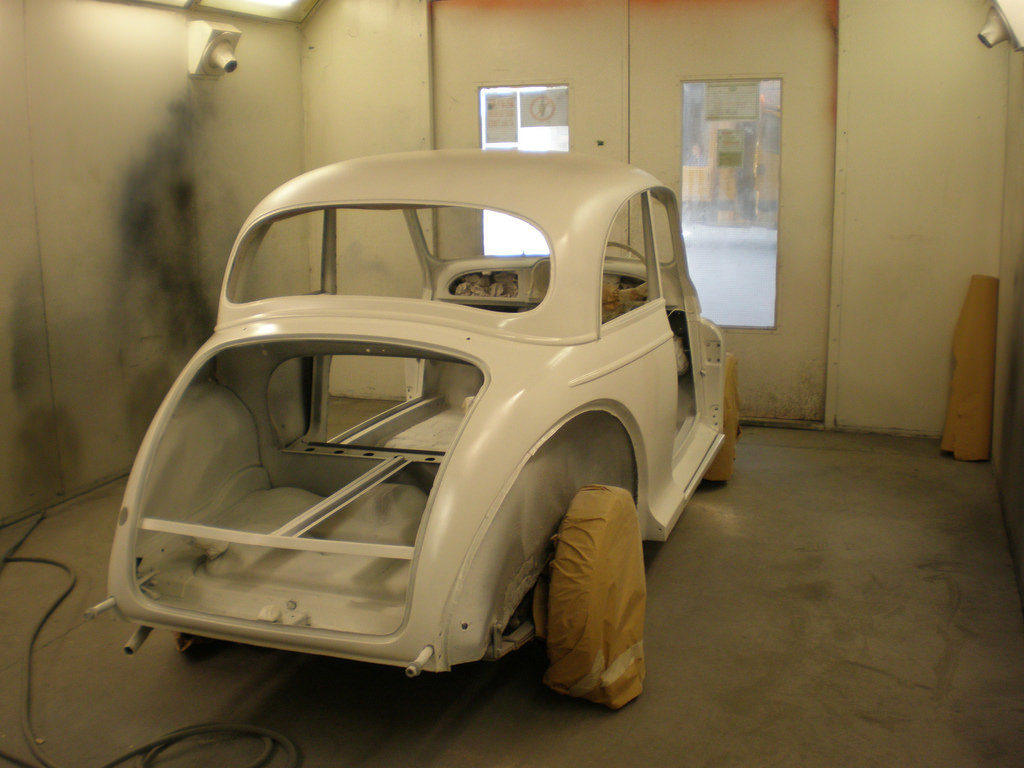
Just follow the instructions you get with the paint. These include things like adding reducer or hardener, filling the spray gun, adjusting pressure… You’ll get all the instructions. What you will rarely find there is advice to test how everything works on a piece of cardboard. You should have several of these in your garage and the best place for them would be the wall. Just paste them there and use for testing whenever you change something.
5. Start spraying
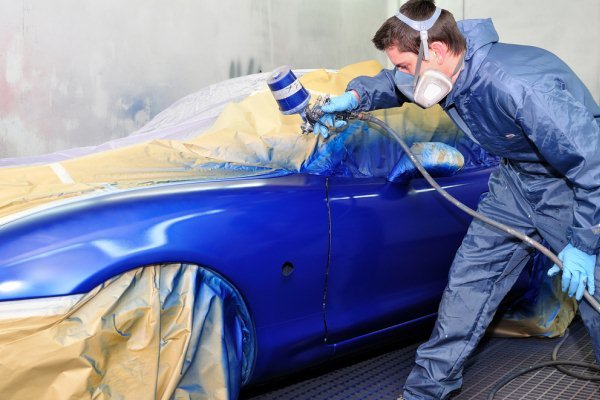
Start from the roof, then the hood and boot and then the sides. This is only your first coat, so make sure you do not add too much paint even if you didn’t cover all the places evenly. You will probably coat the car two or three more times (or more, depending on the type of your paint), so it is better to have a few light layers than one heavy. Make sure you make a pause between coats stated in the instructions (flash time). Start every new coat from the same place and do it in the same order to get some routine with it and ensure even flash time for all parts of your car. Once again, make sure you follow the instructions fully. Also, let the paint dry overnight, but even after that do not press hard on it, since it is pretty soft.
6. What to do if you find imperfections after painting

DO NOT do anything until the paint is completely dry. Don’t try to fix it ‘while it’s still warm’. You will need 1,500 grit wet-sanding paper and make sure you keep the paper and surface wet during sanding. Every time you change the paper you should sand in a different direction. Sanding is done when the surface is completely smooth. This is where you will see the value of the additional coats.
After this you should buff the car at least three times. Move the buffer around to reduce the possibility of increasing heat due to friction.
The last thing is polishing. Make sure you use different pads for polishing than the ones you used for buffing.
DO NOT wax your car for at least a month after painting, since solvents in the paint need to evaporate and wax will prevent that. After a month, treat your car with a nice waxing and it’ll be as good as new.
Lastly, avoid brush and high-pressure washing so as not to damage the paint.
If you are not sure what kind of a paint you want or if a professional repaint is too expensive for you, a good wrap might be the best idea. It is faster, cheaper, and easier to remove and you get loads of options.
Don’t want a paint job? Not to worry, there are alternatives available!




